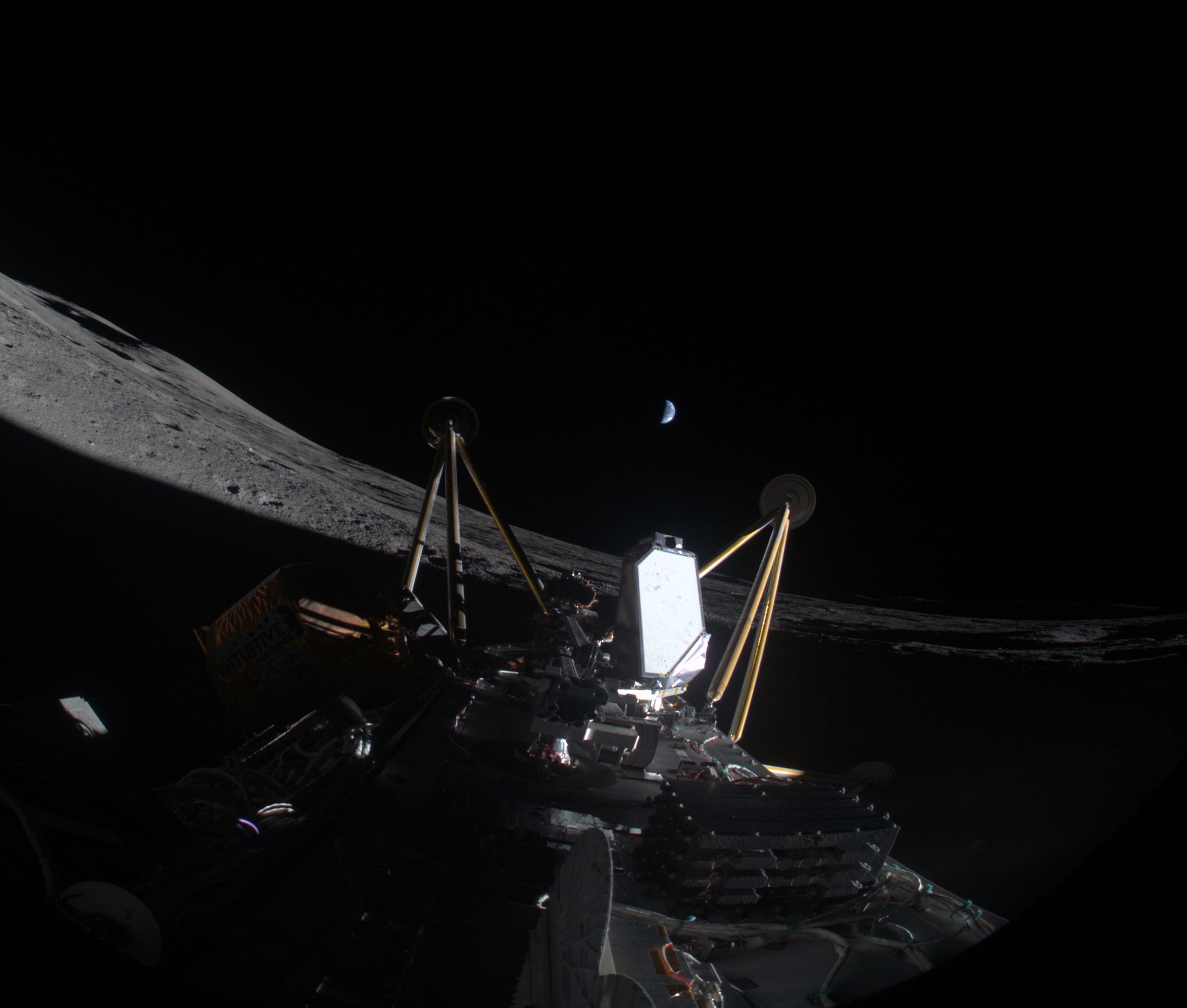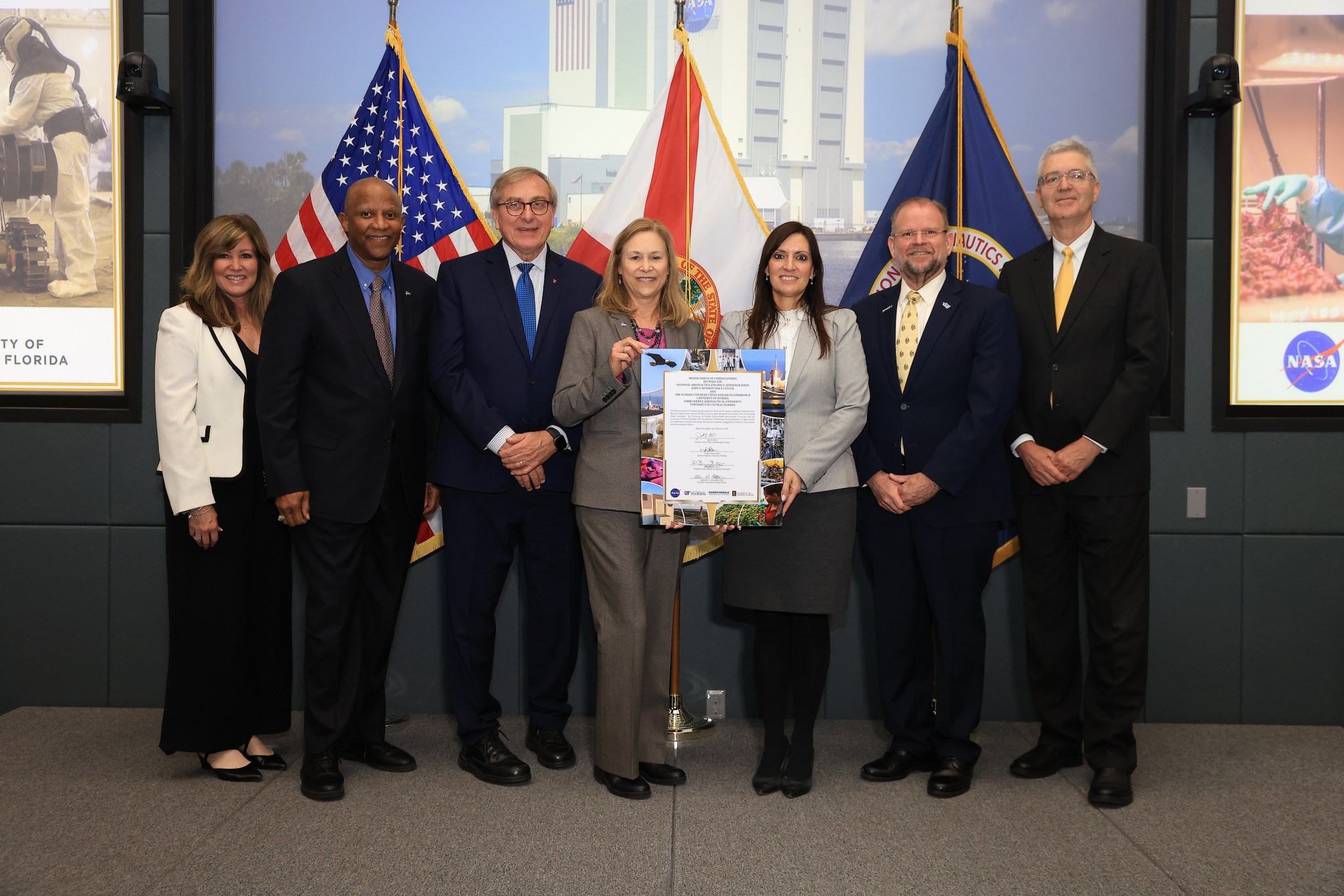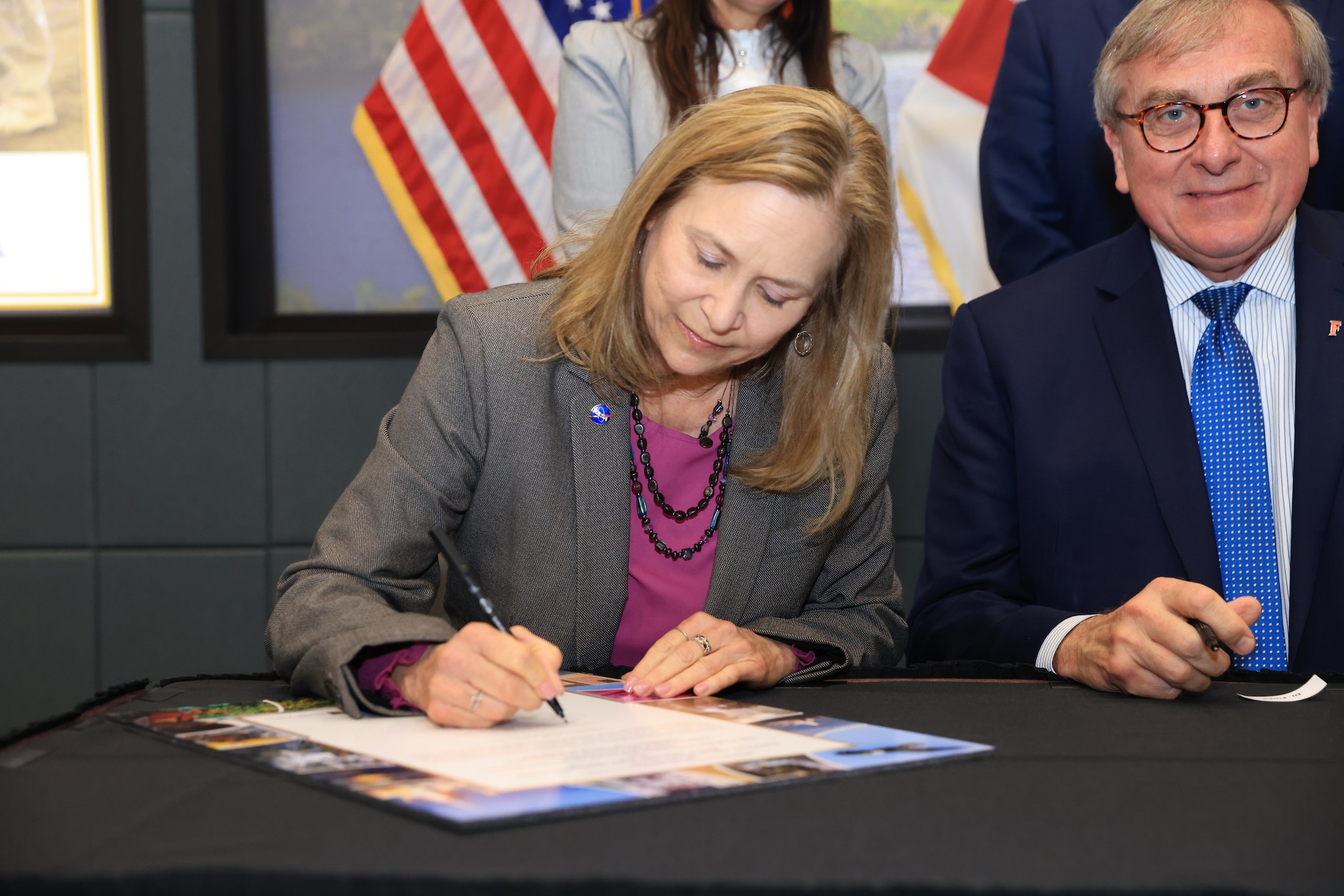NASA’s Lunar Drill Technology Passes Tests on the Moon

Editor’s note: This article was updated on April 29, 2025, to correct the amount of data collected during Intuitive Machines’ IM-2 mission.
NASA’s PRIME-1 (Polar Resources Ice Mining Experiment 1) mission was designed to demonstrate technologies to help scientists better understand lunar resources ahead of crewed Artemis missions to the Moon. During the short-lived mission on the Moon, the performance of PRIME-1’s technology gave NASA teams reason to celebrate.
“The PRIME-1 mission proved that our hardware works in the harshest environment we’ve ever tested it in,” said Janine Captain, PRIME-1 co-principal investigator and research chemist at NASA’s Kennedy Space Center in Florida. “While it may not have gone exactly to plan, this is a huge step forward as we prepare to send astronauts back to the Moon and build a sustainable future there.”
Intuitive Machines’ IM-2 mission launched to the Moon on Feb. 26, 2025, from NASA Kennedy’s Launch Complex 39A, as part of the company’s second Moon delivery for NASA under the agency’s CLPS (Commercial Lunar Payload Services) initiative and Artemis campaign. The IM-2 Nova-C lunar lander, named Athena, carried PRIME-1 and its suite of two instruments: a drill known as TRIDENT (The Regolith and Ice Drill for Exploring New Terrain), designed to bring lunar soil to the surface; and a mass spectrometer, Mass Spectrometer Observing Lunar Operations (MSOLO), to study TRIDENT’s drill cuttings for the presence of gases that could one day help provide propellant or breathable oxygen to future Artemis explorers.
The IM-2 mission touched down on the lunar surface on March 6, just around 1,300 feet (400 meters) from its intended landing site of Mons Mouton, a lunar plateau near the Moon’s South Pole. The Athena lander was resting on its side inside a crater preventing it from recharging its solar cells, resulting in an end of the mission.
“We were supposed to have 10 days of operation on the Moon, and what we got was closer to 10 hours,” said Julie Kleinhenz, NASA’s lead systems engineer for PRIME-1, as well as the in-situ resource utilization system capability lead deputy for the agency. “It was 10 hours more than most people get so I am thrilled to have been a part of it.”
Kleinhenz has spent nearly 20 years working on how to use lunar resources for sustained operations. In-situ resource utilization harnesses local natural resources at mission destinations. This enables fewer launches and resupply missions and significantly reduces the mass, cost, and risk of space exploration. With NASA poised to send humans back to the Moon and on to Mars, generating products for life support, propellants, construction, and energy from local materials will become increasingly important to future mission success.
“In-situ resource utilization is the key to unlocking long-term exploration, and PRIME-1 is helping us lay this foundation for future travelers.” Captain said.
The PRIME-1 technology also set out to answer questions about the properties of lunar regolith, such as soil strength. This data could help inform the design of in-situ resource utilization systems that would use local resources to create everything from landing pads to rocket fuel during Artemis and later missions.
“Once we got to the lunar surface, TRIDENT and MSOLO both started right up, and performed perfectly. From a technology demonstrations standpoint, 100% of the instruments worked.” Kleinhenz said.
The lightweight, low-power augering drill built by Honeybee Robotics, known as TRIDENT, is 1 meter long and features rotary and percussive actuators that convert energy into the force needed to drill. The drill was designed to stop at any depth as commanded from the ground and deposit its sample on the surface for analysis by MSOLO, a commercial off-the-shelf mass spectrometer modified by engineers and technicians at NASA Kennedy to withstand the harsh lunar environment. Designed to measure the composition of gases in the vicinity of the lunar lander, both from the lander and from the ambient exosphere, MSOLO can help NASA analyze the chemical makeup of the lunar soil and study water on the surface of the Moon.
Once on the Moon, the actuators on the drill performed as designed, completing multiple stages of movement necessary to drill into the lunar surface. Prompted by commands from technicians on Earth, the auger rotated, the drill extended to its full range, the percussion system performed a hammering motion, and the PRIME-1 team turned on an embedded core heater in the drill and used internal thermal sensors to monitor the temperature change.
While MSOLO was able to perform several scans to detect gases, researchers believe from the initial data that the gases detected were all anthropogenic, or human in origin, such as gases vented from spacecraft propellants and traces of Earth water. Data from PRIME-1 accounted for some of the approximately 6.6 gigabytes of data collected during the IM-2 mission, and researchers will continue to analyze the data in the coming months and publish the results.

